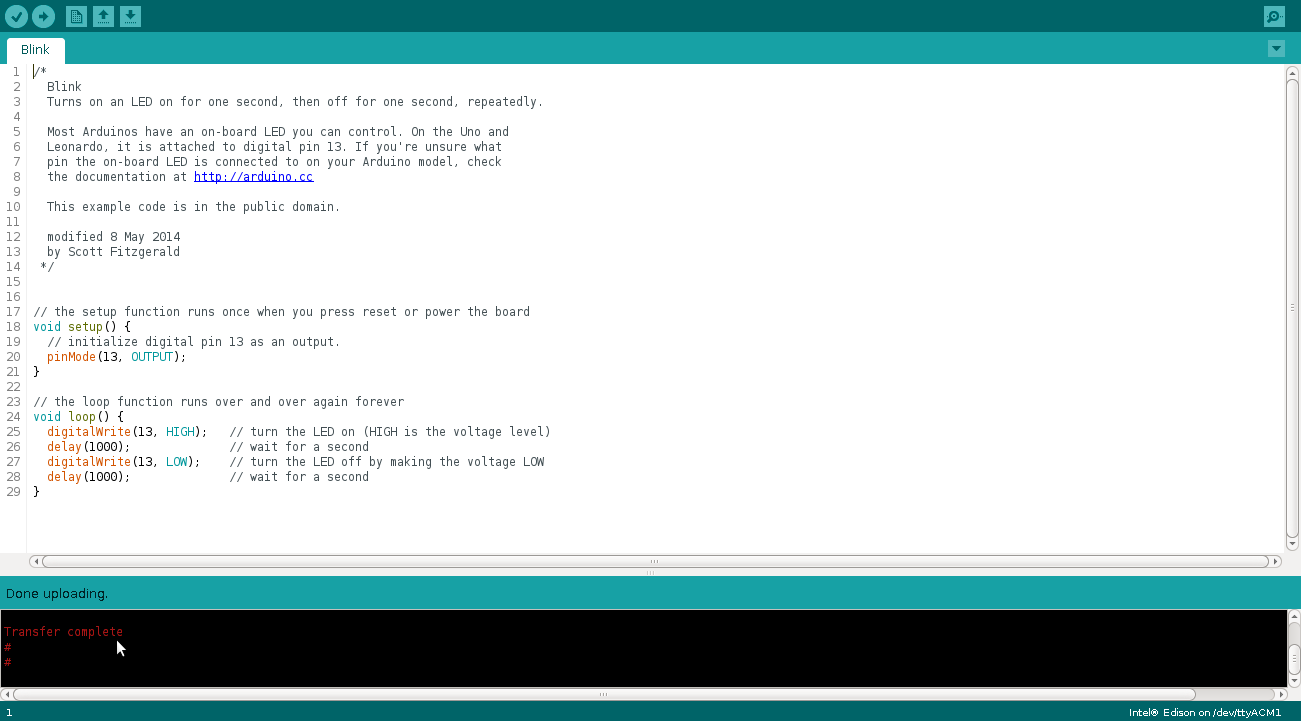

- #ARDUINO SIMPLESYNTH SKETCH INSTALL#
- #ARDUINO SIMPLESYNTH SKETCH DRIVERS#
- #ARDUINO SIMPLESYNTH SKETCH SOFTWARE#
- #ARDUINO SIMPLESYNTH SKETCH CODE#
- #ARDUINO SIMPLESYNTH SKETCH FREE#
#ARDUINO SIMPLESYNTH SKETCH CODE#
In the blink sketch page, change the two parts of the code that say delay(1000) to delay(500). Just to show the computer who's boss, we'll change the code ever so slightly. If you see the 'done uploading' message and the LED on the Nano flashing, you know your board is working. The sketch 'Blink' turns the built in LED on the Nano light on and off every second. If it's successful you'll see a 'done uploading' sign.

You'll get an error message if there's a problem (if so google about connecting an Arduino to your computer). The program will compile and then send it to your Arduino Nano (as long as the Nano is connected OK, and you've selected 'nano' as your board under tools etc). The program will now load into the Arduino software, you'll see this as code on the screen.
#ARDUINO SIMPLESYNTH SKETCH SOFTWARE#
To see if it's working, we'll upload our first software program (called a 'sketch' in Arduino speak) Our First Sketch: Blink With the Nano plugged in, you're given the option to choose the processor (tools -> processor), you might find changing from atmega328p, to atmega328p(old boot-loader) will help.
#ARDUINO SIMPLESYNTH SKETCH DRIVERS#
If you purchased your Arduino form Tayda, there's a link to drivers on the product page. The internet is your friend if you're having trouble.
#ARDUINO SIMPLESYNTH SKETCH INSTALL#
You may need to install drivers, but hopefully not. There's loads of tutorials online about this (aka better than I can write). Now we choose the port (Tools->Port) and chose where the USB is plugged into (com1, com2, com3 etc). Hopefully the software will auto-detect, but we still need to check. I promise you someone else will have had the same problem, and someone else will have the answer.Ĭonnect your Arduino Nano to the computer with the USB cable. If you're having any problems, google it or use the Arduino forums. Great, so now that's installed, lets connect the nano and upload some code. Knobs: There are loads of types to choose from, here's a Moog-style pack of ten for under 2 euros. No laser engraver? Here's another synth with labels from a label printer Some screws? All things you should be able to get at a hardware store (or pay 3 times the price at an art supplies store). Other things you might need are wood glue and a saw. I used a laser engraver for the panel text, but if you don't have one no worries, you could use a silver marker pen, or a label printer. I used a perspex sheet for the front panel, again from the arts shop for about 2 euros. You might be able to get them to cut it for you if you're lucky. If not, mine cost 3 Euros from an arts supply shop. If you want to build a case like in the pictures, you might well have some spare wood lying about. Those dollar-store places often sell wooden boxes that can be used for a synth case. Cheap options include an old lunch box or VHS tape case.
#ARDUINO SIMPLESYNTH SKETCH FREE#
You're free to put the synth in any case you like, although perhaps not metal as it can cause problems. If you have none of these things, you can often pick them all up in starter kits.

If you make lots of mistakes you might need a multi-meter.

If you make a mistake soldering you might need a solder sucker. You'll need a soldering iron, solder, wire-cutters, pliers, wire-strippers (or use a sharp blade to expose wire). maybe $22, but I think it's better say $20 purely for the click-bait title. Obviously postage will be different where you are in the world, but using the Tayda discount code hopefully everything will come to about $20. Here's the main Sketch that I used.X1 5pin MIDI Din Connector $0.99 Midi connector (ebay) The next step is to add Arduino Nano to this board and flash the main sketch into the MCU. It looks pretty much like an Arduino Nano Sheild or addon board. Here's the result so far, all the components are soldered and the board is completed. This article is about the whole built process of this synth so let's get started.įollowing were the things I used in this build. I've been making synths for a while now, made two synths that work identically to this one but they all use Mozi Library to run but this one uses simple code that modulates output by the state of buttons and switches. It works pretty much like a normal keyboard synth. It has 12 push switches along with two ON/OFF switches for changing modes and two potentiometers that change pitch and tempo.īy changing the Pitch Potentiometer, we can change the output waveform that makes cool sci-fi sounds by pressing any 12 buttons.


 0 kommentar(er)
0 kommentar(er)
